Many thanks to SWLing Post contributor, TomL, who shares the following guest post:
My First Loop-On-Ground antenna
A number of people have mentioned the Loop On Ground (LOG) antenna in the past as a good receive-only antenna. I did some research but could only find a few examples by amateur radio operators.
Matt Roberts (KK5JY) has a good article including some antenna theory and measurements, you can find it here:
Someone named Tom (KG3V) has a write up on it but it is a little short on details:
Stana Horzepa (WA1LOU) has something similar:
https://tapr.org/loop-on-ground-log-antenna/
I also read somewhere that for transmitting, a LOG antenna is useless as it radiates much of the energy right into the ground! But I didn’t care about that. I needed something for receive I can deploy easily without supports and take down just as easily. As you may recall, my home condo is literally saturated with noise and I cannot null it out. So a wire looped on the ground is supposed to work? You bet it does!
Of course, there are some conditions to meet. There has to be enough flat ground away from people or pets (or lawn mowers!) who would get tangled in the wire on the ground. The wire should be as close to the ground as possible (although I had good results laying the wire on top of cut grass). The loop of wire can vary in circumference from about 20 feet to 150 feet (the shorter length will stay in an omnidirectional pattern higher in frequency but lower in signal pickup and vice-versa for the longer length). The wire needs to be insulated. That’s about it!
So, off to the hardware store to buy a cheap spool of 100 foot 18 gauge speaker wire. But, the articles mention using a balun and they all made their own. I did not feel like doing that (I am not that good at making things from scratch) and I did not want to spend money ordering one. More reading somewhere informed me that my existing Wellbrook Medium Aperture loop amplifier has a built-in balun at the antenna side of the device. Hallelujah!
I bundled together the wire, Wellbrook parts and battery supply, small laptop and Airspy HF+ to my favorite Lake Nelson Forest Preserve. The shelter there is little used and is adjacent to the prairie with cut grass. It did take a good 15 minutes to lay out the 100 feet of wire on the ground while trying to keep it as flat as possible. And I did not have enough space for a circle, so I ended up with an oblong shape. The long sides are facing directly north-south, so in theory (I think) this gives me an oblong shaped reception pattern east-west. The photo shows half of the wire laying on the grass.
I ended up with this setup on a picnic table at the rear end of the shelter. The coax wire goes from the Wellbrook amp into its power module, then to a Cross Country Wireless preselector, then to the Apirspy HF+ and laptop.
I was really impressed by the signal strength of the usual suspects like Radio Nacional da Amazonia. I could see that the Wellbrook amp was boosting signals across the board with only a little extra noise.
I use the preselector to try to keep the Airspy radio from overloading, especially mediumwave broadcast signals which can sound like a small amount of extra “hash” type noise in the background. I have since added into the accessory chain an old Kiwa Electronics BCB filter that does a great job of knocking down the frequencies below 2 MHz.
I have also since added a water resistant box to enclose the Wellbrook amp to keep it safe from getting stepped on or too wet.
Also, a couple of weeks later I was able to go to a campgound and try out 60 feet of wire but the result was noisier since I was surrounded by RV vehicles in a crowded campsite. It was not horrible and I was able to listen to some good radio stations but location can matter with any antenna.
I hope you like the recordings below. Because of some serious health issues this summer, these May 31 2020 recordings & report are just being published now (I am recovering slowly but surely!). My small laptop is under-powered, so I was only able to record MP3 files one at a time. It kept me busy as I went from one frequency to the next and kept recording anything I heard. I was able to hear a couple of stations I never heard before and that is a success in my book.
It remains to be seen if this antenna is as good as my 19 foot vertical antenna attached to the top of the car roof, especially low-angle DX signals. Maybe you will have the chance to experiment as well and share your experience, too. Now, will a small loop-on-ground antenna around my car parked late at night at a far corner of the grocery store work OK??? I will have to try it!
Recordings (crank up the volume if it is too weak):
22:00 UTC, Radio Saudi (Arabic) 11915 kHz
22:04 UTC, KDSA Adventist Radio (Indonesian) 11955 kHz
22:14 UTC, KDSA Adventist Radio (English) 12040 kHz
22:20 UTC, Voice of Korea (Japanese) 11865 kHz
22:23 UTC, Yemen Radio (heavily jammed) 11860 kHz
22:35 UTC, Radio Brazil Central (Portuguese) 11815 kHz
22:50 UTC, WWV booming in 10000 kHz
23:11 UTC, UnKnown (might be FEBC) 9795 kHz
23:15 UTC, China Radio Int’l (Spanish teaching Chinese, from Kashi) 9800 kHz
23:17 UTC, China Radio Int’l Business Radio (from Xianyang) 9820 kHz
23:19 UTC, China Radio Int’l (Chinese from Urumqi) 9865 kHz
23:21 UTC, Voice of Korea (Korean) 9875 kHz
23:23 UTC, Maybe Radio Taiwan without jamming from CNR 9900 kHz
23:34 UTC, China Radio Int’l (Chinese from Bamako Mali) 7295 kHz
23:43 UTC, Radio Nacional da Amazonia 6180 kHz (& 11780 kHz around 40 seconds)
23:50 UTC, MAYBE China PBS from Xinjiang in Kazakh (nothing else listed on schedules) 6015 kHz
23:56 UTC, Radio Mali (French announcer humming to music and acting crazy) 5995 kHz
00:07 UTC, Radio Rebelde (Spanish w/clear signal, Bauta, Cuba) 5025 kHz
00:15 UTC, 75 meter Amateur Radio 3913 kHz (LSB)
00:27 UTC, CHU Ottawa 3330 kHz
00:30 UTC, XEPPM Radio Educacion (Spanish Mexico City) 6185 kHz
This is brilliant Tom! Thank you for sharing.
Our antenna guru contributor, Grayhat, has been encouraging me (understatement!) to build a Loop-On-Ground antenna but I haven’t done this yet because, at home, our driveway would interfere with its deployment. That and I have no RFI to speak of in my rural/remote home so my skyloop antenna is tough to beat. But having one available for portable use would make a lot of sense. I’m going to put this on my 2021 project list!
Post Readers: Do you use a LoG antenna at home or in the field? Please comment!

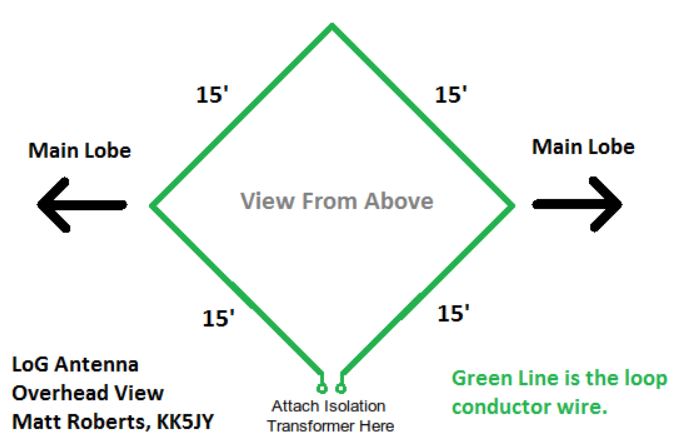
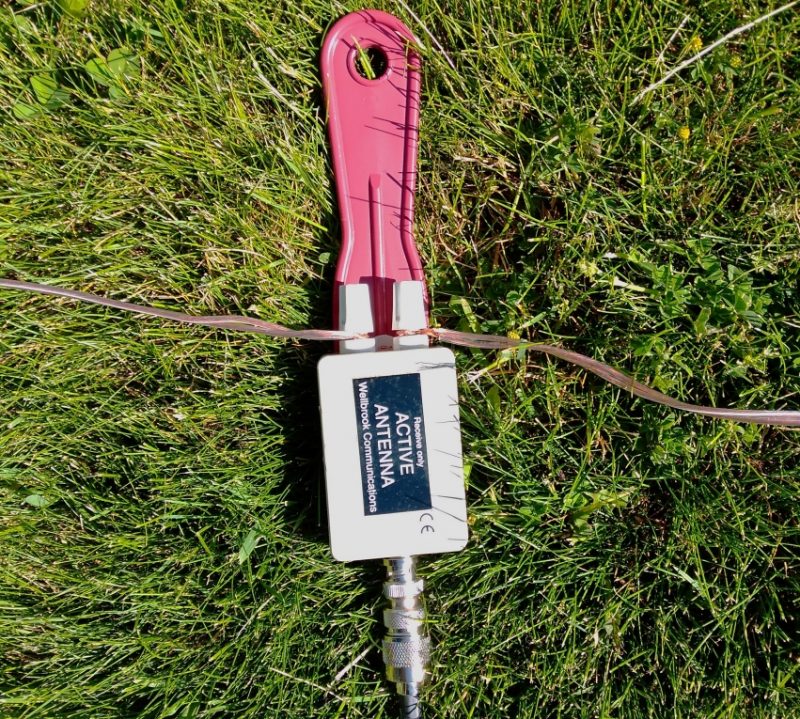
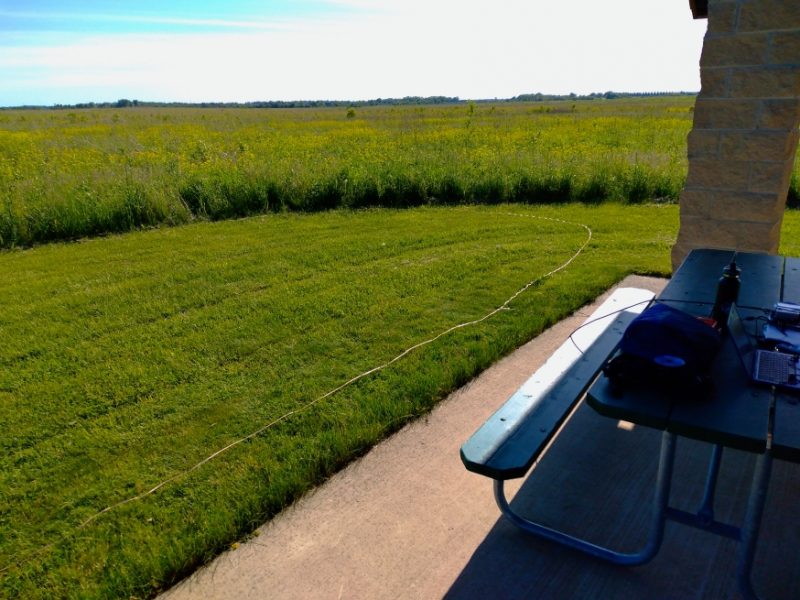
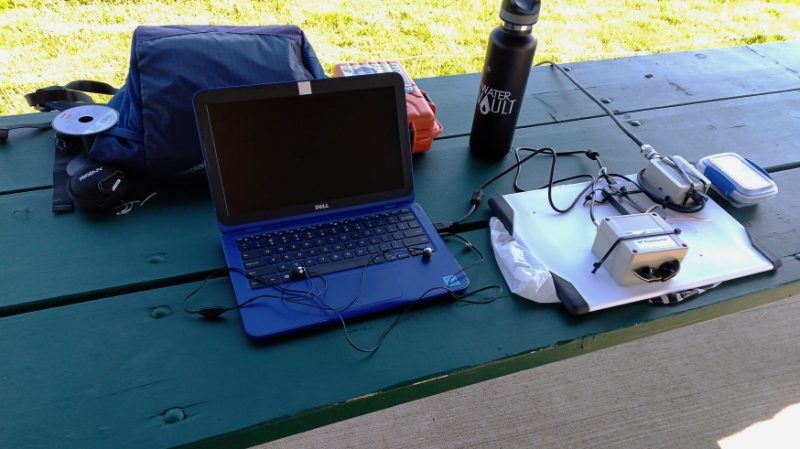
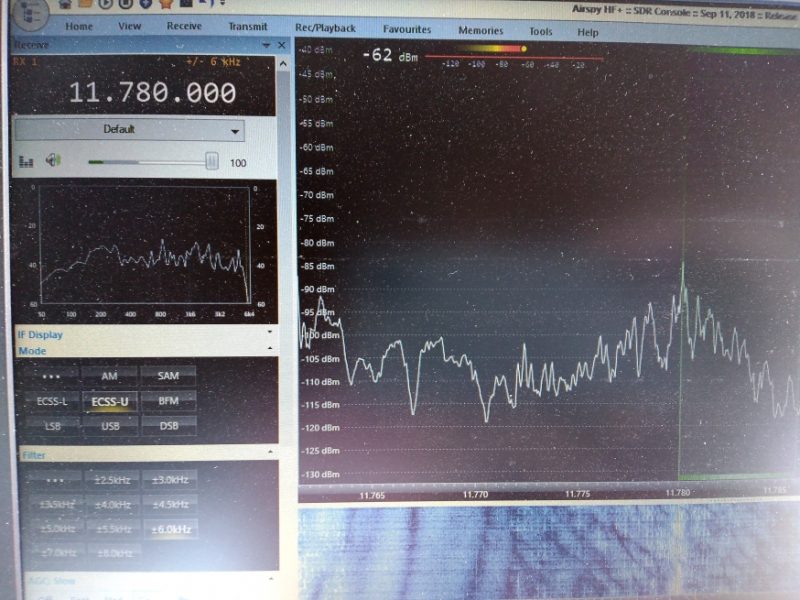
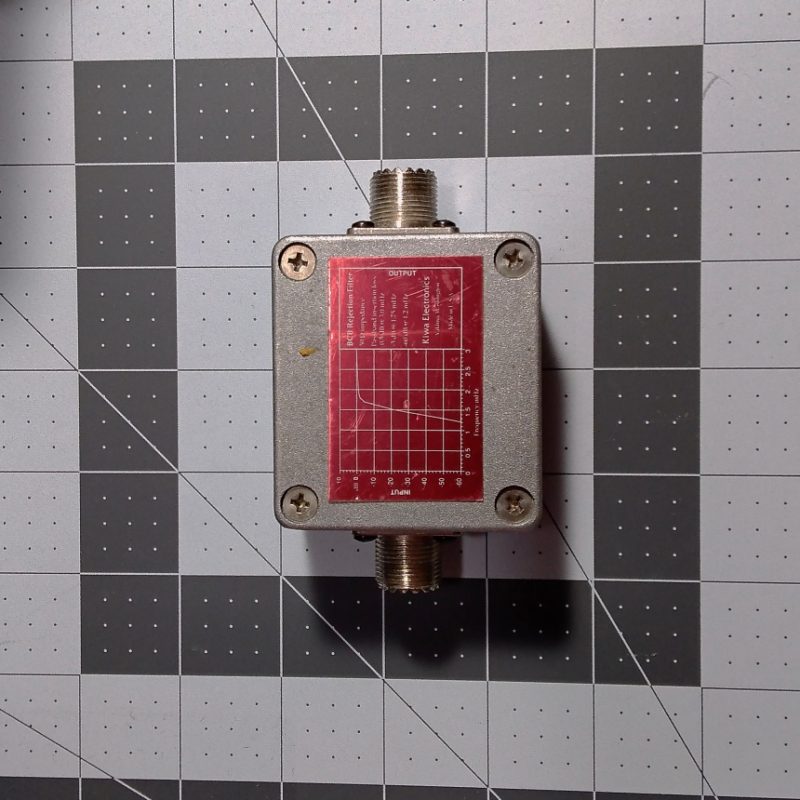
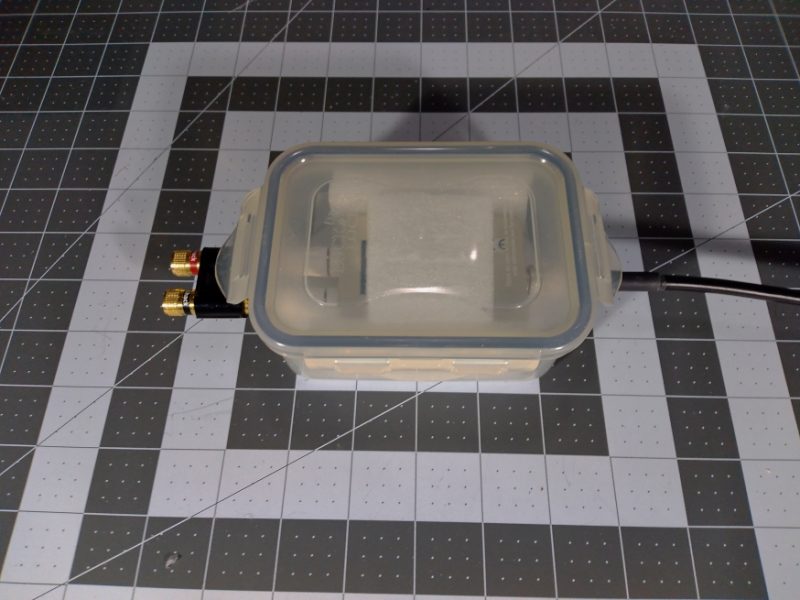
With my Airspy HF+ Discovery its the best antenna in my area in the middle of a HOA in a subdivision with homes all around me with pool pumps and solar chargers and grow lights since we have legal MJ here. 🙂 I’ve tried a OCF Dipole at 83ft/50ft split, an above ground 200 ft loop, 100ft loop, got desperate and disconnected it so many times and changed angles height and tried a sloper/End-fed-halfwave one wire without counterpoise,with, various sizes and everything was noiser than a LOG. I solved a ton of my issues by getting a RTLSDR AM Bandstop filter however had so much noise from RFI.
Mine is 100ft, 25ft sections which I found works best for 80m as the 2nd onei built for portable use with 15ft sections works best for 40m bands. It’s terminated with a nooelec 9:1 v2 balun in a weatherproof box with 25ft of feedline with ferrite chokes on both ends to my HF+ discovery with the AM bandstop filter.
I find i have the best performance with the built in pre-amp on the airspy turned ON, and then its wonderful.
This has been the best antenna I’ve ever used for my SDR. Hands down.
I’m running a websdr using rsp1a and LOG antenna (as for now) – https://so8oo.net/en/websdr/
This antenna is a great performer when you consider used space, time and effort to setup such antenna.
There are some issues with this kind of antennas like common mode chocking, but it is really worth to try it!
Piotr SO8OO / SN0E
This is done for VLF experimentations on the below 9khz or so range in countries where those are unallocated. I’ve seen people talk across town through the ground with CW and FT8 using home brews made from audio amplifiers. Would be an interesting stealth radio option without having to lay down field phone cables.
In the past 3 months I used my 60ft active LOG and a 33ft vertical (fiberglass pole, single radial, passive of course) in turns at the dike. I’d be pressed hard to tell the difference if I’d be blindfolded, all of my indicator stations come in on both, with differences clearly caused by condx. On one more extreme example (Auckland VOLMET on 6MHz, which is as far as it gets from Central Europe) the vertical may have a tiny edge over the LoG but I can’t be sure unless I thoroughly A/B’d both. I found the active version will increasingly outperform the passive one (I have another 60ft loop with a Nooelec 9:1 balun) above 10 MHz by a small but noticeable margin.
Bottom line: At the beach, the convenience/performance ratio of the LoG, paired with never being a problem on windy days clearly wins, because the performance is virtually the same. This may or may not turn out differently on other soils though.
I have used an 148′ coaxial “shielded” loop-on-ground for many years. Built it before the current LoG fad, as I wanted a low-noise antenna for regional reception of tropical band HF. Works fine from longwave to well into HF.
Copy-and-paste from my HFU post about the antenna below. There are some crude diagrams at the link, too.
https://www.hfunderground.com/board/index.php/topic,29940.msg114696.html?PHPSESSID=div83g6j71g3rmpdiqt2ci5ok3#msg114696
“I have an 148′ square loop on the ground. It is a “shielded” coaxial loop design. Why shielded? I have lots of RG-6 coax available, so I figured why not? Likely does not matter much, if at all, but anyway.
Interestingly enough, it is my primary LW, MW, and HF receiving antenna. I sometimes use a preamp, though it is rarely needed for frequencies under 15MHz.
I have attached my extraordinarily basic – as in Paint.NET 😉 – antenna details below. I went for a loop size slightly larger than a wavelength at the 40M band, but being on the ground, the actual resonance could be (and probably is) much lower.
There used to be a dedicated balun at the feedpoint, but it offered little to no discernible difference, so it was replaced with a direct coaxial feed as depicted and several snap-on ferrites on the feedline. I do use a common mode choke (~3000-ohms rating at HF) back near the attached receiver, though it is not really needed either IMO.”
Once upon a time I did a nanoVNA sweep. IIRC, it looked about as expected for a lossy loop with negative gain.
Admittedly, I have been increasing using a 31′ ground-mounted vertical over a radial field in recent times. It is simply a better DX antenna for HF. However I do like the SNR of the LoG when listening to regional shortwave broadcasters, like Radio Havana and WTWW. The LoG is also my go to antenna for when I can pull in what remains of the longwave broadcasters.
Thanks Robert for that link, I will look at it. I have never tried to listen to LW since it is hard to pick up in the Midwest. Perhaps this antenna has possibilities.
Also, here is a discussion thread on QRZ I just found from Matt (KK5JY), Post# 126 where he believes that low angle DX with a LoG antenna is dependent on higher ground conductivity characteristics (which is very dependent of what region one is from). https://forums.qrz.com/index.php?threads/loop-on-ground-antenna.622669/page-13
A well built vertical is probably superior to a LoG. Maybe I will be able to do a shootout between my car-mounted vertical vs. the LoG.
The use of balanced antennas when compared to the ground is in widespread use. These antennas when connected to the receiver using coaxial cable use a balance to unbalanced transformer to maintain this balance on the antenna and the earthed cable shield keeps interference on the way to the receiver out.
This design reminds me of a poor man’s rhombic antenna https://www.mapability.com/ei8ic/rhombic/text.php
A side by side comparison when designed for the same frequencies would be interesting.
In a previous life I had the occasion to use an Eyring ground mounted antenna with a 20 Watt HF manpack radio. Mainly designed for low probability of visibility. Very low background noise, almost to the point of wondering if it was just a dummy load but it did work for two-way communications. Here’s a link I found:
http://www.hflink.com/antenna/elpa/
Bob W6ACU
Andrew,
Thanks for prodding me and others to try this. At the time, I did not want to wait for ordering a balun. Also, I am more than pleased with the built-in balun + amplification my Wellbrook loop amp provides for my Airspy HF+, so I will probably keep using it this way. Here is a 70 foot “volleyball net” loop antenna using a similar Wellbrook amplifier which gave me the idea – https://swling.com/blog/tag/volleyball-net-loop-antenna/
Hi Tom, first of all hope you’re getting better and better !
That said, no need to thank, it’s just that, in time, I’ve built (and/or helped to build) quite some samples of the LoG and I believe it’s a good RX antenna (it isn’t designed to transmit !) for the lower frequencies.
As for the balun, I don’t know which kind of balun sits inside the WellBrook loop preamp, and in my experience that makes quite a lot of differences, see, the original design from Matt (KK5JY) uses a transformer for a good reason, such a balun offers galvanic isolation between the antenna (LoG) and the feedline, this allows the antenna to be totally “floating”, that is, laying on ground but isolated from it, and this, in my experience helps a lot keeping the noise figure down to minimal levels, so if you’ll have a chance, my suggestion is to either wind a transformer (as indicated at Matt’s website) or to buy a ready made (and quite cheap) NooElec balun (remembering that, if going with the V1 one will have to cut the “R1” trace on the back of the board)
Getting back to the antenna, here’s a trick to avoid issues with lawn mowers, that is… use some garden hose 😀 not kidding, let’s say we put down the LoG in a square shape as for the original design and tie it to ground using some plastic stakes, now to protect the wire we may just pick 4 runs of garden hose cut to the size of the square sides and run the antenna wire inside them and you’ll be then able to mow the lawn w/o problems 😀 also, willing to be able to change the antenna orientation, the antenna may be tied to the stakes using some plastic rings so that the wire may slide through them, at that point just “omit” one of the four hoses (one of the two ajacent to the LoG feedpoint) and you’ll be able to slide the feedpoint from a corner to another one, so effectively reorienting the antenna pattern 😀
What else… oh yes, for portable use, I suggest marking the three antenna corners using some tape, in short, fold the wire in two and mark the half point, fold it in two again and mark the side corners and you’ll be ready, at that point, deploying the antenna just means picking the middle point and locking it (using a stake, a stone, a piece of wood…), then doing the same for one corner and then for the other, with such an approach you’ll be able to deploy the antenna in minutes 😀
Anyhow… if you can try using a transformer, I believe you’ll hear the difference
Best
not willing to wind a balun (even if it’s really easy and cheap), a NooElec V2 balun (or even a V1 with the R1 tap cut off) will just work 🙂